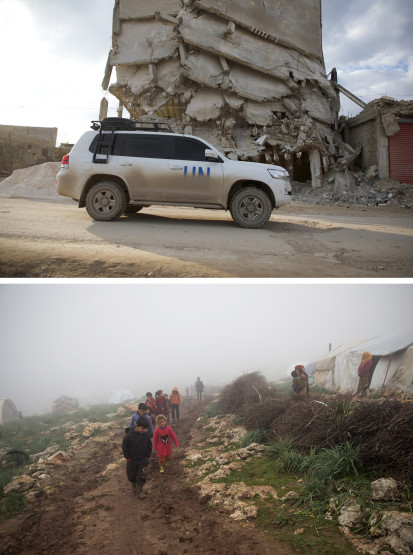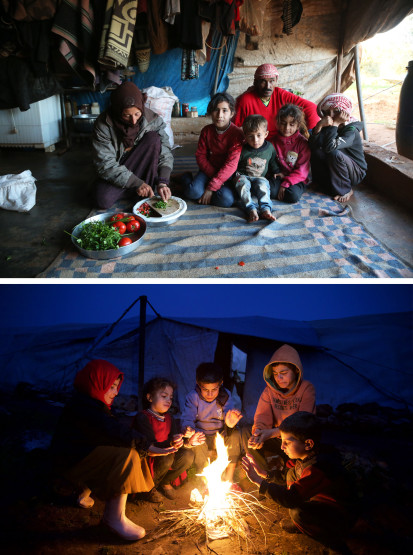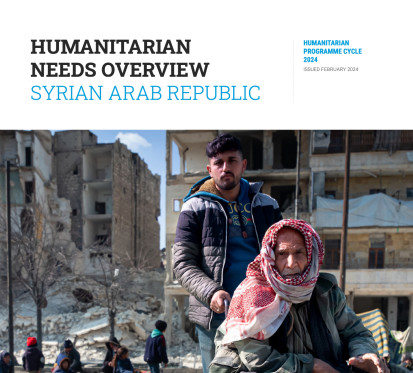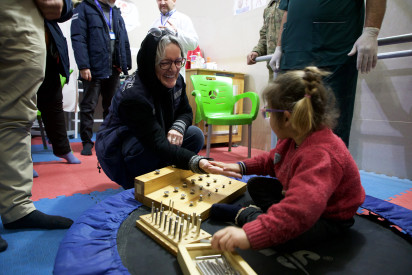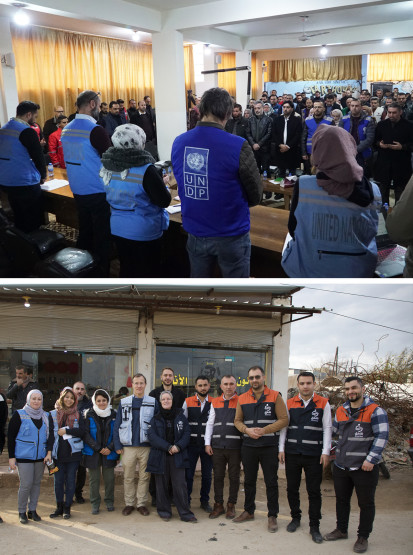The 2023 Humanitarian Response Plan for Syria was 38 per cent funded by the end of last year, making it the least funded plan in the history of the response.
The cross-border operation remains a lifeline, reaching millions of people each month with aid and protection services. However, the scale of needs in north-west Syria has consistently outweighed the capacity of the response. Funding cuts in 2023 have affected all clusters, leading to the suspension of various humanitarian activities and services. The humanitarian community is adapting to the uncertainty of the 2024 funding landscape but underfunding and the resulting reduction in assistance have a significant human cost.
What’s at stake?
Malnourished children are missing out on therapeutic feeding: The dietary patterns of children aged 6–23 months in Syria have deteriorated over the past five years, with only 1 in 10 children consuming a Minimum Acceptable Diet in 2023. In the north-west, the prevalence of child wasting has increased from 0.7 per cent in 2019 to 4.1 per cent in 2023. 20 per cent of children are stunted, an irreversible condition, which has been the same prevalence for seven years. According to the Nutrition Cluster, funding shortages have already forced the suspension of nutrition interventions, including Outpatient Therapeutic Feeding Programmes (OTPs) aimed at treating severely malnourished children. As of January 2024, 95 OTPs were running – a decrease from 128 programmes in October of the previous year. The number of Rapid Response Teams has also dropped from 154 to 78 by January 2024, falling short of the 200 teams estimated necessary for the response.
A generation of children are missing out on education: In 2024, 1 million school-aged children are out of school– this includes an increase of 200,000 children following the earthquakes. Nearly 60 per cent of camps and IDP sites do not have schools or education centers. Persistent underfunding, unpredictable hostilities and economic hardships have significantly impacted education activities throughout 2023. According to the Education Cluster, 54 education facilities reported suspension or closure in the last quarter due to funding shortages. Meanwhile, frequent teacher strikes, driven by insufficient wages, led to further loss of learning hours. The Cluster also reported that hostility attacks impacted 38 education facilities since last October.
Women and girls are missing out on safe spaces with protection services: Services in 35 Women and Girls Safe Spaces (WGSS) were disrupted by funding constraints throughout 2023 while 17 WGSS have closed down, reported the Protection Cluster. In the last quarter of 2023 alone,1,049 gender-based violence survivors across north-west Syria sought services such as safe shelters, medical support, specialized mental health and child protection which were not available in the different locations where gender-based violence services are currently being provided.
Displacement camps are forgotten: Overcrowded camps and displacement sites, where the majority of residents are women and children, are some of the most affected areas with heightened protection risks. The situation was worsened after the earthquakes due to the influx of newly displaced individuals. The Camp Coordination and Camp Management (CCCM)Cluster reported a funding gap of 69 per cent in 2023 which has strained the Cluster’s ability to cover emergency response. 657 out of over 1,500 camps identified by the Cluster are already over five-year old and urgently need improvement including rehabilitation of properties, roads and communal facilities damaged by floods and storms.
Vulnerable families are missing out on winter assistance: The 2023-2024 Winterization and Flood Preparedness Response Plan, which targets 2.1 million people, was less than a quarter funded by the end of January. Out of the total plan, 25 members under the Shelter/Non-Food Items (SNFI) Cluster reported winter plans, with a total appeal of $71 million, of which only $28.5 million has been secured. This meant that only 860,000 individuals could be targeted, leaving a gap of over 1 million people at risk of harsh winter conditions. According to the Health Cluster, respiratory infection cases among children under five years old have reached a record high this winter since five years.

